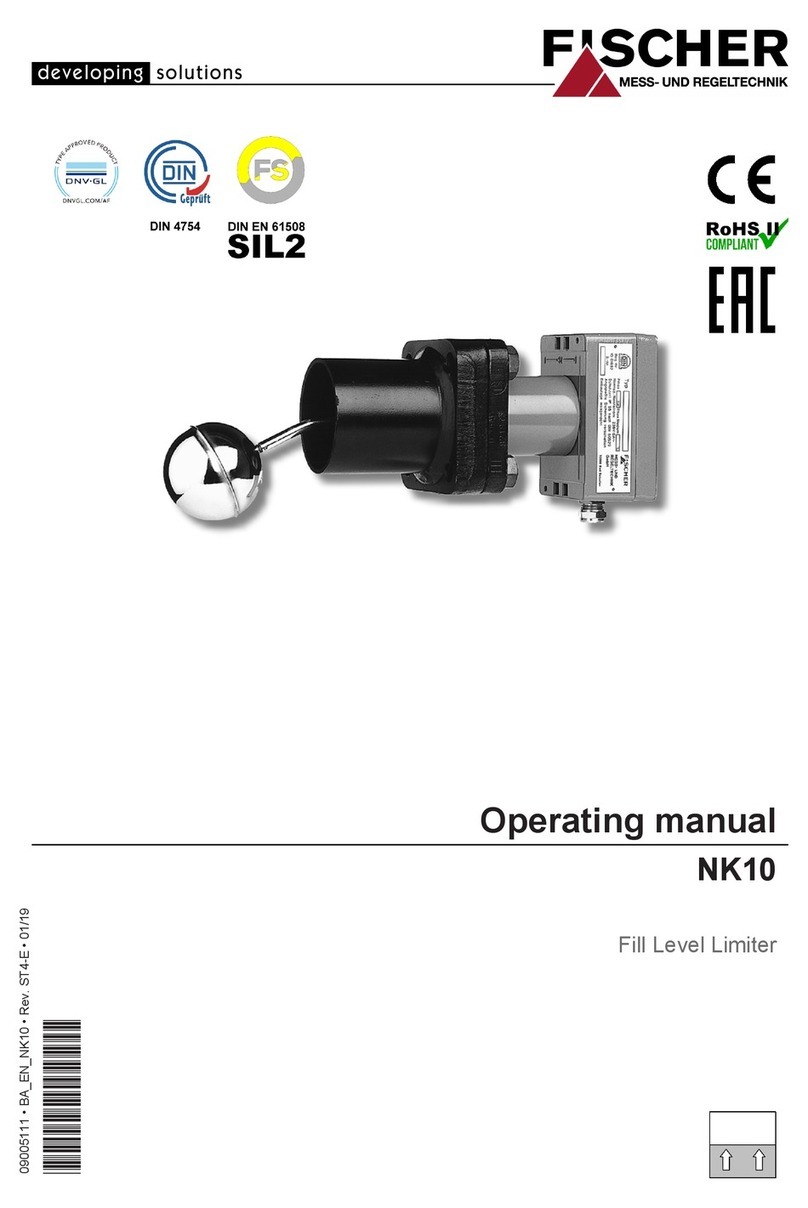FISCHER Mess- und Regeltechnik GmbH Table of Contents
BA_EN_NK10_H_ST4-C iii
Table of Contents
1 Safety guidelines........................................................................................................................................... 4
1.1 General....................................................................................................................................................4
1.2 Personnel Qualification ...........................................................................................................................4
1.3 Risks due to Non-Observance of Safety Instructions..............................................................................4
1.4 Safety Instructions for the Operating Company and the Operator ..........................................................4
1.5 Unauthorised Modification.......................................................................................................................5
1.6 Inadmissible Modes of Operation............................................................................................................5
1.7 Safe working practices for maintenance and installation work................................................................5
1.8 Pictogram explanation.............................................................................................................................5
2 Product and functional description............................................................................................................. 6
2.1 Delivery scope.........................................................................................................................................6
2.2 Explosion hazard area classification .......................................................................................................6
2.3 Function diagram.....................................................................................................................................6
2.4 Design and mode of operation ................................................................................................................7
3 Installation and assembly ............................................................................................................................ 8
3.1 Safety guidelines .....................................................................................................................................8
3.2 Valid range ..............................................................................................................................................8
3.3 Process connection .................................................................................................................................8
3.4 Electrical connections..............................................................................................................................9
4 Commissioning ........................................................................................................................................... 11
4.1 Safety guidelines ...................................................................................................................................11
4.2 Generalities ...........................................................................................................................................11
4.3 Function test..........................................................................................................................................11
5 Servicing ...................................................................................................................................................... 12
5.1 Maintenance..........................................................................................................................................12
5.2 Transport ...............................................................................................................................................12
5.3 Service ..................................................................................................................................................12
5.4 Disposal.................................................................................................................................................12
6 Technical data ............................................................................................................................................. 13
6.1 General..................................................................................................................................................13
6.2 Application conditions............................................................................................................................13
6.3 Switch contacts .....................................................................................................................................14
6.4 Measurement accuracy .........................................................................................................................14
6.5 Directives and certificates .....................................................................................................................14
6.6 Construction design...............................................................................................................................14
7 Order Codes ................................................................................................................................................ 20
8 Attachments ................................................................................................................................................ 21
8.1 Declaration of Conformity......................................................................................................................21
8.2 Type testing certificates.........................................................................................................................23
8.3 DIN CERTCO Certification DIN 4754-3.................................................................................................31
8.4 EAC Declaration....................................................................................................................................33























